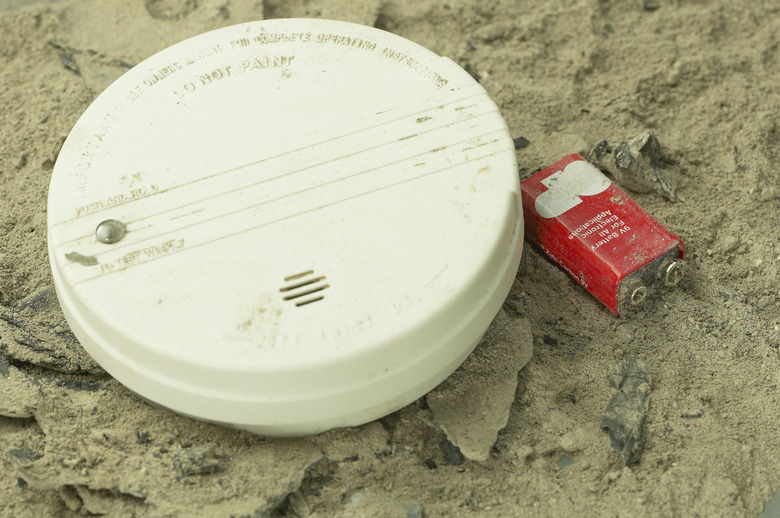9-Volt Battery Projects
Staples of the smoke detector and walkie-talkie industries, 9-volt batteries are often used for science projects too. There are several science principles that you can illustrate with a nine volt battery, and may get yourself out of a tight spot.
Make a Flashlight
Make a Flashlight
Since 9-volt batteries have the positive and negative terminals on one end, it is possible to easily touch both terminals at once. Make a mini flashlight by putting the side of a flashlight bulb on the positive terminal of the battery, facing over the edge. Tape the bulb in place with duct tape, then tape a bare wire to the negative terminal. To turn the simple flashlight on, complete the circuit by touching the wire to the light bulb.
Divide Water
Divide Water
No, not like Moses and the Red Sea. Divide water into hydrogen and chlorine with a 9-volt battery, two pencils with graphite (read "electricity-conducting") lead sharpened on both ends, two test tubes, salt, water and a piece of foam from a meat tray. Rubber band the battery to a small piece of the meat tray and stick the pencils through the bottom of the foam so they touch the battery terminals. Put them in a small, plastic cup and pour salt water into the cup. You'll see bubbles rising from the pencil tips. Fill two test tubes with water and one at at time, invert them over the bubbling pencil tips. The gas will displace the water in the test tubes and you'll collect hydrogen and chlorine gas.
Make Your Own Batteries
Make Your Own Batteries
Using needle-nose pliers, it's possible to cut down the seam of a 9-volt battery and expose the six 1.5 volt batteries inside. These batteries are not sold separately, but in the industry are called quadruple A batteries. They can be used in a device requiring AAA batteries, with the small adjustment of adding a thin piece of metal between the batteries and the contacts in the battery compartment.
Feel the Power
Feel the Power
Again, because both battery terminals are on the same end of the battery, it is possible to test the power in the battery without a volt tester by touching both terminals against something that conducts electricity, like a knife or metal tool. The battery will spark if it is charged. This characteristic also makes it dangerous to touch both terminals to your tongue, since they will shock you. It also means the batteries can be used as a homemade bark collar, with a circuit that completes when the dog lifts his head to bark. Use care when attempting this project.
References
Cite This Article
MLA
Murdock, Rachel. "9-Volt Battery Projects" sciencing.com, https://www.sciencing.com/9volt-battery-projects-12000409/. 24 April 2017.
APA
Murdock, Rachel. (2017, April 24). 9-Volt Battery Projects. sciencing.com. Retrieved from https://www.sciencing.com/9volt-battery-projects-12000409/
Chicago
Murdock, Rachel. 9-Volt Battery Projects last modified August 30, 2022. https://www.sciencing.com/9volt-battery-projects-12000409/
